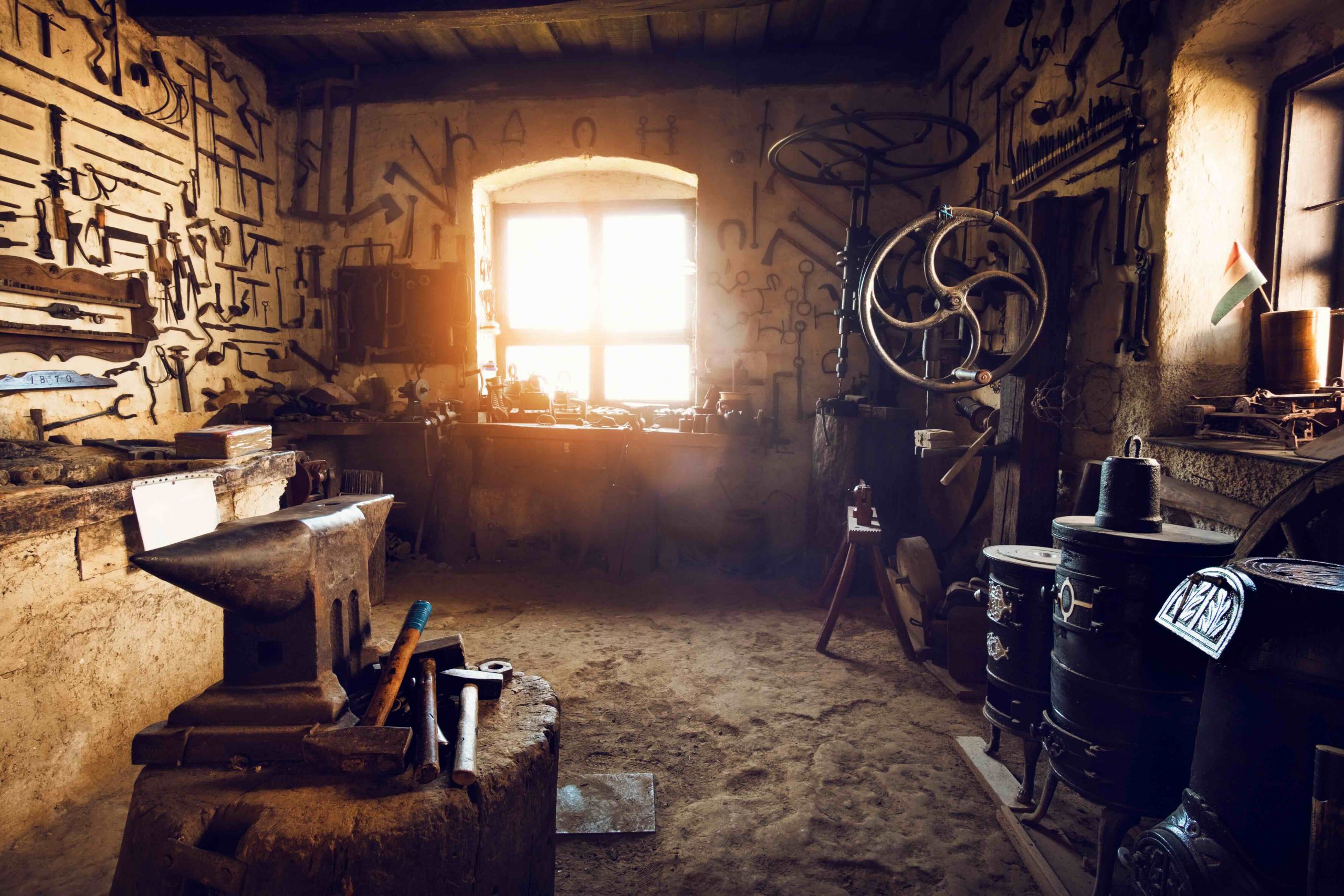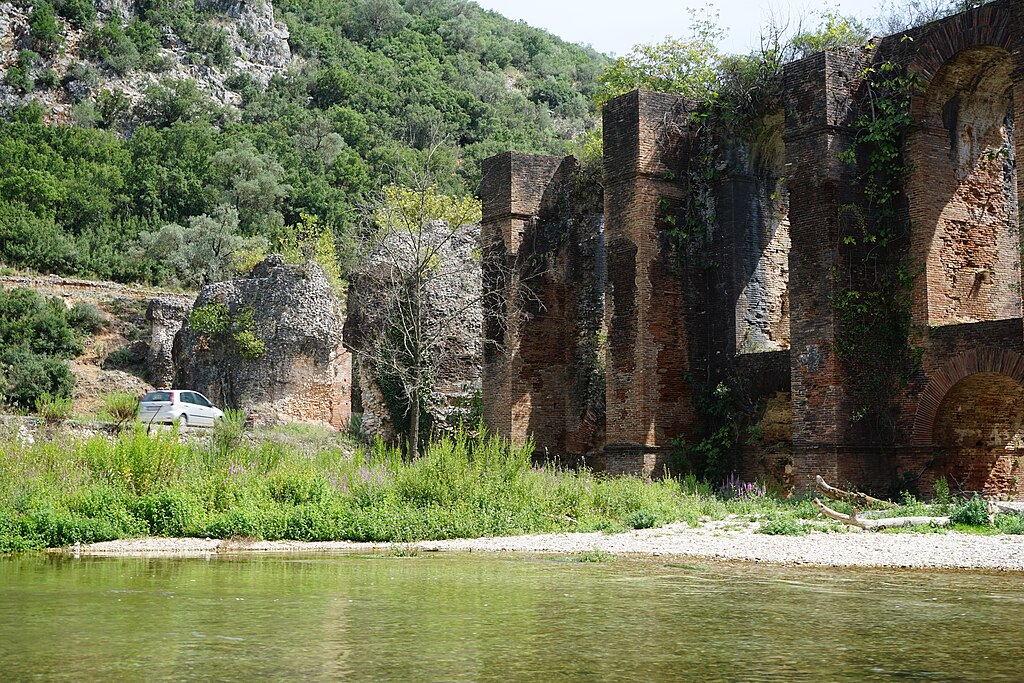
The ancient world wasn’t just about pyramids and aqueducts—it was a hotbed of innovation. While we often credit modern times for our technological leaps, many ancient inventions were so advanced they could rival or even surpass some modern engineering marvels. Here are 10 ancient inventions that were way ahead of their time and still leave us in awe.
10. Roman Concrete
Stronger with Age

Source: user:matankic, Original by Kleon3, CC BY-SA 4.0, via Wikimedia Commons
The Romans invented a form of concrete (opus caementicium) that is not only durable but also grows stronger over time. Structures like the Pantheon and aqueducts still stand today thanks to this wonder material. Modern researchers are still trying to replicate its unique self-healing properties.
Weird detail: Roman concrete used volcanic ash, which reacts with seawater to prevent cracking—a technique we’re rediscovering for eco-friendly construction.
9. The Baghdad Battery
Electricity in Ancient Times?

Source: Ironie, CC BY-SA 2.5, via Wikimedia Commons
This 2,000-year-old clay jar discovered in Iraq contains a copper cylinder and iron rod, resembling a primitive battery. When filled with an acidic liquid like vinegar, it could produce an electrical current. While its purpose is debated, some believe it may have been used for electroplating or rituals.
Weird detail: It’s possible the ancients knew how to create electricity long before the industrial age.
8. Greek Fire
The Ancient Flamethrower

Source: See page for author, Public domain, via Wikimedia Commons
The Byzantine Empire wielded Greek Fire, a terrifying weapon that could burn on water. Delivered via pressurized nozzles, this incendiary mixture helped defend Constantinople for centuries. The formula has been lost, making it one of history’s greatest military secrets.
Weird detail: Witnesses claimed Greek Fire couldn’t be extinguished with water—only sand or vinegar worked.
7. The Antikythera Mechanism
The World’s First Analog Computer

Source: Zde, CC BY-SA 4.0, via Wikimedia Commons
Discovered in a shipwreck off Greece, this 2,000-year-old device could predict astronomical events, including eclipses and the positions of planets. Its complexity stunned modern scientists, who initially couldn’t believe something so advanced existed in antiquity.
Weird detail: X-ray imaging revealed over 30 intricate gears inside—technology not seen again until the 18th century.
6. The Aeolipile
The First Steam Engine

Source: ZDF/Terra X/Gruppe 5/ Susanne Utzt, Cristina Trebbi/ Jens Boeck, Dieter Stürmer / Fabian Wienke / Sebastian Martinez/ xkopp, polloq, CC BY 4.0, via Wikimedia Commons
Invented by Hero of Alexandria in the 1st century AD, the aeolipile was a simple steam engine powered by boiling water. While it was mainly used as a novelty or temple toy, it demonstrated the potential of steam power nearly 1,700 years before the Industrial Revolution.
Weird detail: Despite its potential, the ancients didn’t develop it further for practical use.
5. The Hanging Gardens of Babylon
An Engineering Marvel (If It Existed)

Source: Athanasius Kircher, Public domain, via Wikimedia Commons
One of the Seven Wonders of the Ancient World, the Hanging Gardens are said to have featured tiered gardens with complex irrigation systems. Though their existence is debated, descriptions suggest an unparalleled feat of hydraulic engineering in the ancient world.
Weird detail: Some theories suggest the gardens may have actually been in Nineveh, not Babylon.
4. Roman Aqueducts
The Lifeblood of a Civilization

Source: Albinfo, CC0, via Wikimedia Commons
The Romans perfected the art of transporting water over long distances using aqueducts, some of which still function today. With their clever use of gravity and precise gradients, aqueducts supplied cities with fresh water, fueling growth and hygiene.
Weird detail: The Aqua Claudia, one of Rome’s most famous aqueducts, stretched over 40 miles and could deliver millions of gallons of water daily.
3. The Indian Iron Pillar
A Rust-Proof Wonder*

Source: Arjunfotografer, CC BY-SA 4.0, via Wikimedia Commons
Located in Delhi, India, this 1,600-year-old iron pillar has baffled scientists because it has barely rusted despite centuries of exposure. Its corrosion-resistant composition showcases the advanced metallurgy of ancient India.
Weird detail: Modern metallurgists discovered that a thin protective film formed from its high phosphorus content, preventing rust.
2. Ancient Prosthetics
Functional and Futuristic

Source: Jon Bodsworth, Copyrighted free use, via Wikimedia Commons
The oldest known prosthetics, like the 3,000-year-old wooden toe found in Egypt, were not only functional but also aesthetically designed. They demonstrate a deep understanding of anatomy and the needs of disabled individuals.
Weird detail: The Egyptian toe prosthetic was tested on volunteers in recent years and found to be surprisingly effective for walking.
1. The Great Wall of China’s Sticky Rice Mortar
The Ultimate Binding Agent

Source: Jakub Hałun, CC BY-SA 3.0, via Wikimedia Commons
The Great Wall of China owes part of its durability to sticky rice mortar. Ancient builders mixed rice starch with lime to create a super-strong binding material that was resistant to weathering and earthquakes.
Weird detail: Scientists found the same sticky rice formula in other Chinese monuments, proving its effectiveness across centuries.
Final Thoughts
These ancient innovations prove that humanity’s genius isn’t confined to the modern age. From rust-proof iron to early computers, our ancestors had an uncanny ability to solve complex problems with the tools available. Which of these inventions do you think was the most impressive? Let us know in the comments below!


